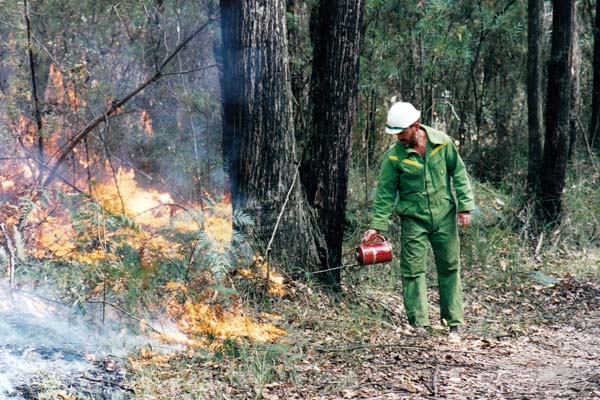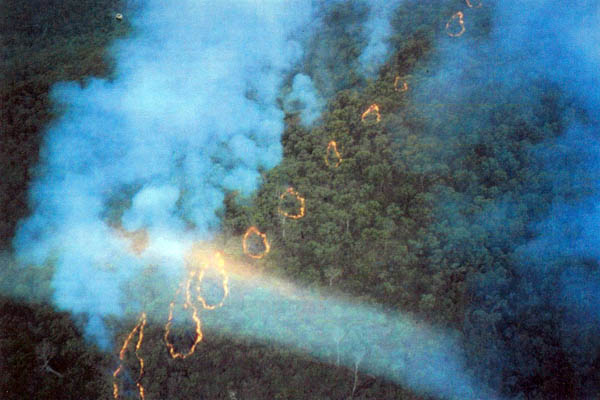Fuel Reduction Burning
At this stage the intent of this article is simply to lead you to some relevant resouces that are available on this site.
- reduce the total weight of fuels, so as to reduce the intensity of a subsequent wildfire. This should lead to quicker and easier suppression of the fire with a saving of resources.
- reduce the height of understorey vegetation and hence the flame height and rate of spread of a wildfire.
- remove firebrand material, principally fibrous or flaky bark from the trees, so as to reduce the potential of wildfires to generate spot fires ahead of the main fire front. The reduction of spotting potential can reduce overall rates of spread and make fire suppression easier and safer."
Fire Management in Eucalypt Forests - A Hodgson 1967
Fighting Fire with Fire - 1983 Symposium Papers
Fire Research Report 25 - FCV 1985
Fire Research Report 41 - CNR 1993
Protecting Forests with Fire - FCV Leaflet ca 1970s
Prescribed Burning on Public Land in Victoria - R Incoll 1992
Fire Protection & Fuel Reduction Burning - Report to Minister for Forests, 1982
Control Burning in Eucalypt Forests. AG McArthur 1962
There are also some photos of aerial ignition operations for fuel reduction burning in the Fire Operations Gallery.

Traditional drip torch in use for fuel reduction burning
Abt 2015
Source: W Worrell

Aerial ignition from helicopter in North East Victoria
Abt 2003
Photo: J Scott
Source: B Marsden